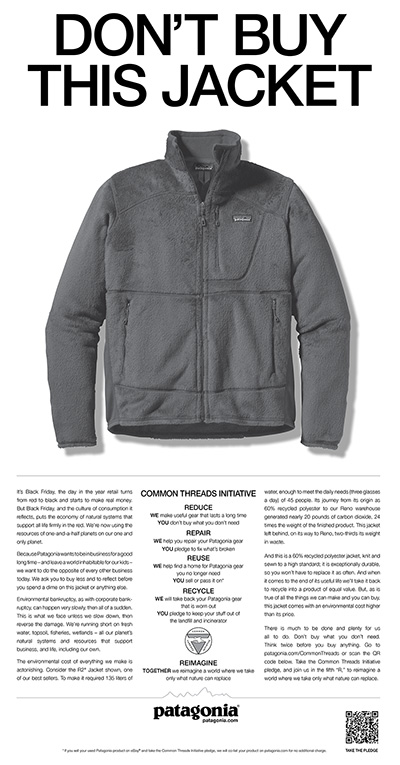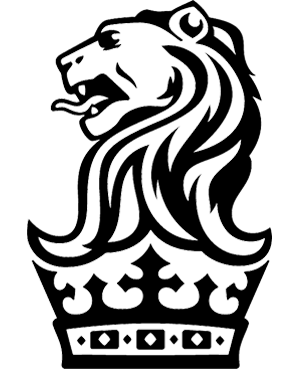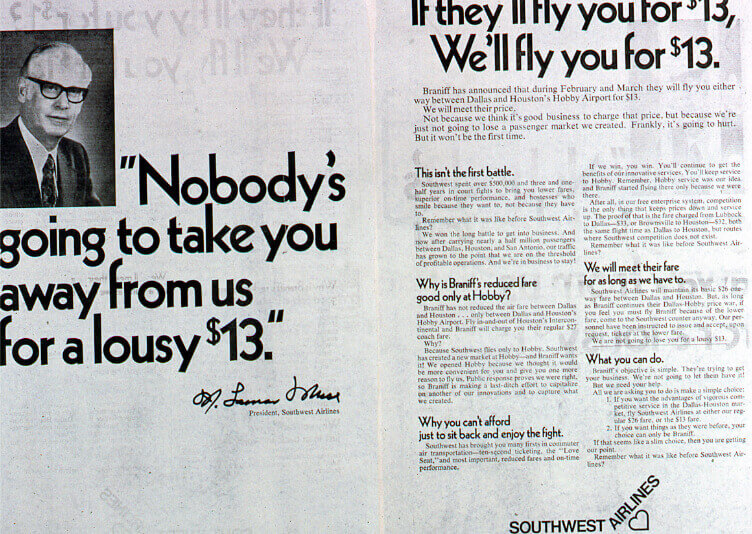Tags
#Promotions
The rebellious creator
Rebellious creators are visionaries with a calling to change the world. They are not here to be liked, they are here to create things that make a difference. They define themselves, not by their job title, but by the impact they make.
They cannot be put into a single mold as they come from all backgrounds. They are artists, musicians, historians, and even zoologists. Their rebellious spirit is what connects them and motivates them to do things differently—to stand up to the status quo.
They are fearless. They are not afraid to show who they are and what they stand for, and have even gone so far as to raise a skull-and-crossbones flag above their headquarters. They cannot be deterred or ignored, and they are never going away.
They are the crazy ones.
Showcase your cause, not your product
Apple's 1984 ad, which introduced the Macintosh, shows no images and describes no details about the product. It is an ad focused solely on what drives Apple as a company and is considered one of the best television ads of all time.
Turn your ads into manifestos
The Apple store was designed to appeal to non-Apple users and show them what actually is possible with an Apple product. Before opening their doors for the first time, Apple ran this ad, 5 down, 95 to go, as their manifesto to those non-users.
Turn store openings into a party for raving fans
At each Chick-fil-A grand opening, the first one hundred customers receive free meals once a week for one year. This prize has become so popular that raving fans began to camp out in front of stores days before their opening. Seeing an opportunity to build relationships with their customers, Chick-fil-A turned these campouts into one long event with free samplings, a midnight Icedream® party, backstage tours of the restaurant, and live entertainment and activities.
Create messaging that is worth talking about
When first launching this billboard campaign, Chick-fil-A only showed the rubber chicken without any text or logo. It was only after thousands of people drove past it and media chatter began to rise that they added the rest.

Find your Blue Ocean Marketing Strategy
Chick-fil-A's marketing goal was to find an uncontested market space, and then dominate it. With a limited budget, they couldn't compete with TV ads—but what they could do, was focus on billboards, 3D billboards to be precise. At the time, billboards were used only to showcase price points and tell people which exit to take. Chick-fil-A, however, found their Blue Ocean by using billboards to build an emotional connection with their brand. Their rules for billboards were simple:
- Create advertising that is unexpectedly fun. Every billboard had to be endearing and make them laugh.
- Don't show the product. You can't build an emotional connection around a picture of a piece of chicken on a bun, so don't try.
- Don't show prices, deals, or tell people where to turn. Focus on connecting with people through humor, not selling them something. See first rule.
Promote by committee
Besides not having final say on who to hire, Google managers are also not allowed to promote any of their staff without committee approval. This allows promotions to be evaluated equally across the company as managers might define their "best people" differently.
Managers can, however, nominate their employees for a promotion, or individuals can nominate themselves. The promotion committee will then review a promo packet that contains:
- Recommendations from colleagues
- Examples of work, and
- Data showing how the impact you have made merits a promotion
These documents are then compared to a set list of pre-determined criteria and an Unbiasing Performance Review Checklist to ensure fairness. The process takes two to three days, and if rejected, the employee can be nominated again in six months.
Create the anti-advertisement
While Patagonia is in the business to make and sell products, part of their mission is to inspire and implement solutions to the environmental crisis. On Black Friday 2012, the biggest shopping day of the year, Patagonia pushed their mission forward by taking out a full-page ad in the New York Times that encouraged customers to only buy what they need with the tagline: Don't Buy This Jacket.
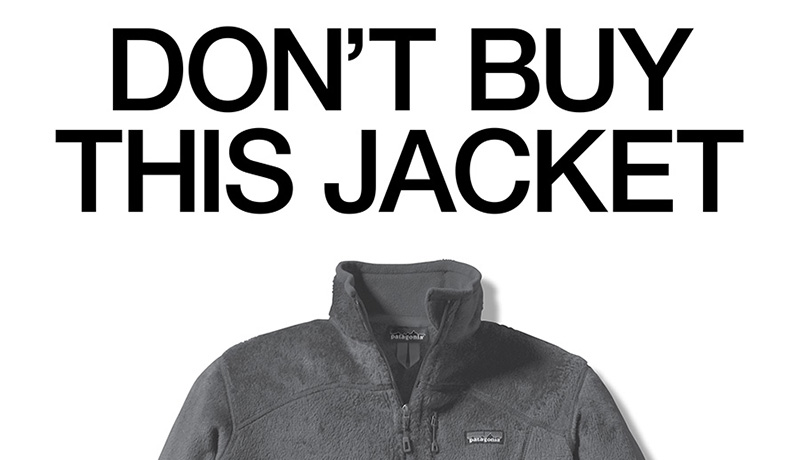
Be willing to offend
Hidden beneath the tag of Patagonia's Regenerative Organic Stand-Up Shorts reads a message: Vote the Assholes Out. While the tag was printed in 2020, the saying had been used within the Patagonia culture for years as a way to encourage people to vote climate-change deniers out of office. After the phrase was used by Founder Yvon Chouinard in a letter to a non-profit, that was all the approval the design team needed to add it to the shorts.
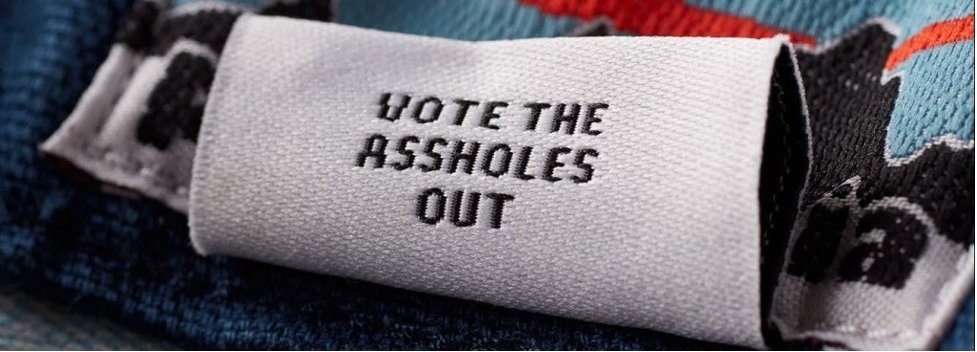
Use honest imagery to show who your core customers are and what they do
For Patagonia, imagery is not about taking photos of beautiful models backpacking the Appalachian Trail on an autumn day—that is too safe. They also don't set up staged shots of non-customers wearing Patagonia gear—that would be dishonest.
Instead, Patagonia's imagery focuses on capturing real people doing real things. Picture a climber "picnicking on the hood of a rusted Chevy at the base of a climb" or a "euphoric skier rising from a face plant." That's the imagery Patagonia wants, and in order to capture that, they use photos of their actual customers taken by actual customers (or their customers' photographers in the image below).

Emphasize the experiences you offer, not the product
The Ritz-Carlton used to focus their messaging on the elegance of their properties, but as the company evolved, so has their messaging. Imagery and stories now focus on the unique and exotic experiences that their locations offer, as highlighted in their short-film series, The Stay.
Win price wars by knowing your audience
In 1973, as a young airline, Southwest's low cost frequent flights were posing a threat to the market share of the larger well-established Braniff Airlines. Having deep pockets, Braniff launched a campaign that undercut Southwest's $26 flight from Dallas to Houston by half.
With the strong possibility of losing all of their business to Braniff's cheaper flights, Southwest fired back with an ad that read: 'Nobody's going to shoot Southwest Airlines out of the sky for a lousy $13.'
Within the ad, Southwest offered their customers a choice: Southwest would either match Braniff's $13 fare or customers could buy a regular $26 ticket and receive a complimentary fifth of vodka, whiskey, or scotch.
And the result? Besides Southwest becoming the largest distributor of those liquors in Texas during that time,:
- Three quarters of Southwest passengers chose the liquor over the half priced fare.
- Southwest's passenger count went up by 66%.
- Southwest turned its first ever profit that year.
Braniff, on the other hand, reinstated their original higher rates and would eventually cease operations in 1982.
Southwest's victory was a result of the company understanding their audience. Their core customers were business travelers who expensed their trips, and would much rather have a free bottle of booze than help their company save a few dollars.
Forget traditional advertising, just surprise and delight people
Pop quiz: A lone coffee cup is resting on top of a cab as it slowly starts to pull away—what do you do?
If you are the type of person that runs up to warn the cab driver, you would have been pleasantly surprised to receive a Starbucks gift card from the cabbie.
This clever empty magnetic cup was used as a way for Starbucks to surprise and delight potential customers. Instead of advertising in traditional ways like billboards, Starbucks prefers to find ways to bring joy into people's lives. They have even been known to have unadvertised free ice cream socials on hot days and free cups of 'Calm' on Tax Day, as well.
Create buzz about new locations with handshake marketing
When Umpqua Bank opens new stores, they get people talking around town through what they call "handshake marketing." Instead of standard direct mail promotions, they rely on random acts of kindness and will:
- Randomly buy lunch for everyone at a restaurant.
- Buy out a nearby Peet's coffee shop for the morning.
- Leave a gift on nearby doorsteps, like a plant or all the ingredients for a spaghetti dinner, with a note inviting people to stop in.
- Buy an ice cream truck and deliver ice cream around town for a few days or weeks.
- Hand out $5 transit passes to commuters at random times.
Before opening their San Francisco store, Umpqua surrounded it with construction walls and had local artists recreate Twitter messages from people who used the hashtag #umpquasf. Umpqua would then select ones at random and send the tweeter a gift based on their interests. One person received a Nike gift card because he was a huge sports fan.




